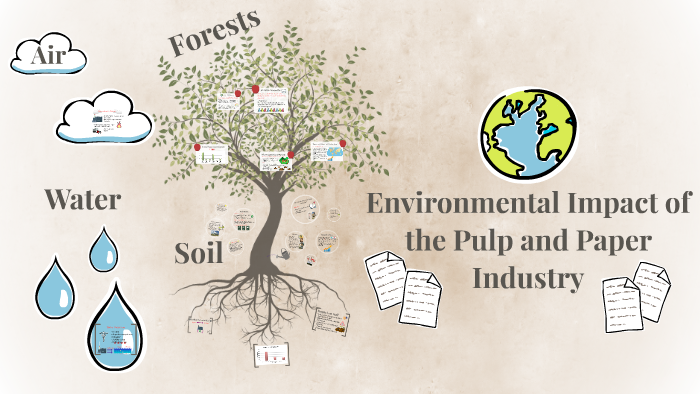How does the paper industry impact the environment?
Environmental Impact of the Paper Industry
The paper industry plays a significant role in global manufacturing and has a substantial impact on the environment. From deforestation to pollution, the paper industry is faced with various environmental challenges. In this section, we will delve into the negative effects of the paper industry on the environment, the contributions to deforestation and pollution, and potential solutions to mitigate its impact.
What are the negative effects of the paper industry on the environment?
The paper industry has several negative effects on the environment. One of the most significant impacts is deforestation. The production of paper requires vast amounts of wood pulp, leading to the destruction of forests. Deforestation not only disrupts ecosystems but also contributes to climate change by reducing the planet's ability to absorb carbon dioxide.
Furthermore, paper production consumes substantial amounts of water and energy. The extraction and processing of raw materials, such as wood and chemicals, contribute to resource consumption. This, in turn, leads to the emission of greenhouse gases and air pollutants, further exacerbating global warming and air pollution.
Additionally, the paper industry generates a significant amount of waste and pollution. The production process produces solid waste, wastewater, and toxic chemicals. Disposal of these wastes often leads to water pollution, soil degradation, and contamination of ecosystems. Harmful chemicals used in the production of paper, such as inks and dyes, can also have detrimental effects on the environment and human health.
How does the paper industry contribute to deforestation and pollution?
The demand for paper drives deforestation, especially in regions where forests are logged to obtain wood pulp for paper production. Large-scale logging operations result in habitat destruction and the loss of biodiversity. Moreover, deforestation contributes to climate change as trees play a crucial role in absorbing carbon dioxide from the atmosphere.
In terms of pollution, the paper industry is a significant emitter of greenhouse gases and air pollutants. The production process, including wood processing, pulp bleaching, and the use of fossil fuels, generates carbon dioxide, methane, and volatile organic compounds. These emissions contribute to global warming and air pollution, affecting both the environment and human health.
Water pollution is also a concern in the paper industry. Wastewater from paper mills contains harmful chemicals, such as chlorine and solvents, which can contaminate rivers, lakes, and groundwater. This pollution not only harms aquatic life but also poses risks to the communities that rely on these water sources for drinking and irrigation.
What are some potential solutions to mitigate the environmental impact of the paper industry?
The paper industry has been making efforts to reduce its environmental impact through various measures. One essential approach is the adoption of sustainable practices in resource consumption and emissions reduction. By implementing efficient technologies, optimizing production processes, and minimizing waste, paper mills can significantly reduce their ecological footprint.
Case studies have shown that sustainable practices can be successful in the paper industry. For example, some paper mills have adopted anaerobic digestion, a process that breaks down organic waste material to produce biogas, which can then be utilized as an energy source. This reduces the reliance on fossil fuels and lowers greenhouse gas emissions.
Companies in the paper industry have also taken steps towards water conservation. Some mills have achieved net zero water usage by implementing water recycling systems, rainwater harvesting, and efficient water management practices. These initiatives help minimize the strain on water resources and protect local ecosystems.
Regulations and initiatives targeting sustainability in the paper sector are also driving change. Governments and organizations have implemented policies that encourage responsible forest management, promote the use of recycled paper, and support the development of alternative fibers. Certification systems, such as the Forest Stewardship Council (FSC), ensure that wood used in paper production comes from responsibly managed forests.
In conclusion, the paper industry has a significant environmental impact, from deforestation to pollution. However, efforts are being made to mitigate these effects. Through the adoption of sustainable practices, the reduction of resource consumption and emissions, and the implementation of regulations and initiatives, the paper industry can move towards a more sustainable future.
FAQs about the Environmental Impact of the Paper Industry:
What are the negative effects of the paper industry on the environment?
To calculate the negative effects of the paper industry on the environment, we look at factors like deforestation, energy consumption, greenhouse gas emissions, and pollution.
How does the paper industry contribute to deforestation and pollution?
To assess the paper industry's contribution to deforestation and pollution, we consider factors such as the demand for wood pulp, habitat destruction, greenhouse gas emissions, and wastewater contamination.
What are some potential solutions to mitigate the environmental impact of the paper industry?
To address the environmental impact of the paper industry, various solutions include sustainable practices, resource optimization, water recycling systems, and regulations promoting responsible forest management.
How is the paper industry evolving towards sustainability?
To understand the paper industry's evolution towards sustainability, we can analyze practices like sustainable forest management, the use of alternative materials, and investments in research and development for greener production.
What are some innovative practices in the paper industry?
To identify innovative practices in the paper industry, we can explore anaerobic digestion for energy production, net zero water usage certifications, waste reduction techniques, and advancements in alternative fiber sources like bamboo and hemp.
In conclusion, we explored the environmental impact of the paper industry, focusing on deforestation, pollution, and sustainability efforts. By understanding resource consumption, case studies on sustainable practices, and regulations for sustainability, we can see a shift towards greener operations. Innovations like anaerobic digestion, net zero water usage, and waste reduction techniques are leading the industry towards a more sustainable future. Sustainable alternatives such as bamboo and hemp, managing paper demand, and leveraging technology will continue to shape the future of paper production.




